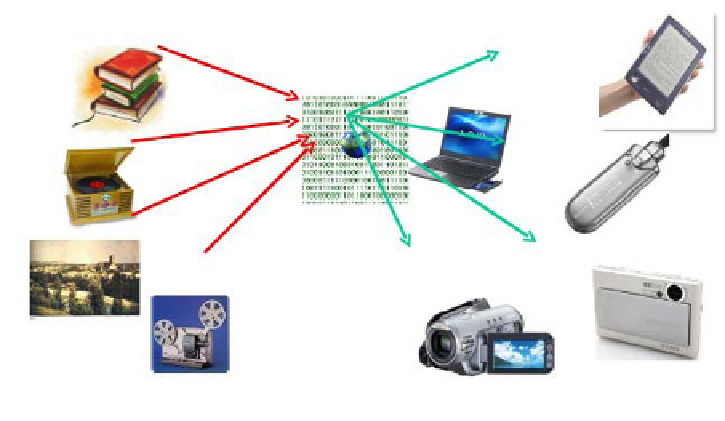Java Reference
In-Depth Information
Figure 10.1
In the digital world, all kinds of content is represented using
universal binary strings. Furthermore, all this content can be appropriately
rendered using a
universal computer
. Nevertheless, for the consumer, industry
proposes many tailored devices
-
copy,
-
compress,
-
transmit,
-
archive,
-
...
binary strings without knowing, say, that it is a music binary string or a
book binary string. Figure 10.2 illustrates this powerful property of generic
algorithms that act on all kinds of digitalized contents.
One of the frequent questions to ask is why humans calculate using decimal
numbers using digits in
{
0
,
1
,
2
,
3
,
4
,
5
,
6
,
7
,
8
,
9
}
but computers only use bits,
digits in
. The answer is whatever base you choose, provided that it has
at least two digits, you will get the same order of power to express
compactly
numbers. Indeed, unary numeral systems require a linear number of signs to
express a number, while binary numeral systems only use log
n
of them. In other
words, the binary numeral system is exponentially more powerful at compacting
numbers than the unary numeral system.
In summary the digital world brought us these four advantages over the analog
world:
{
0
,
1
}

Search WWH ::

Custom Search